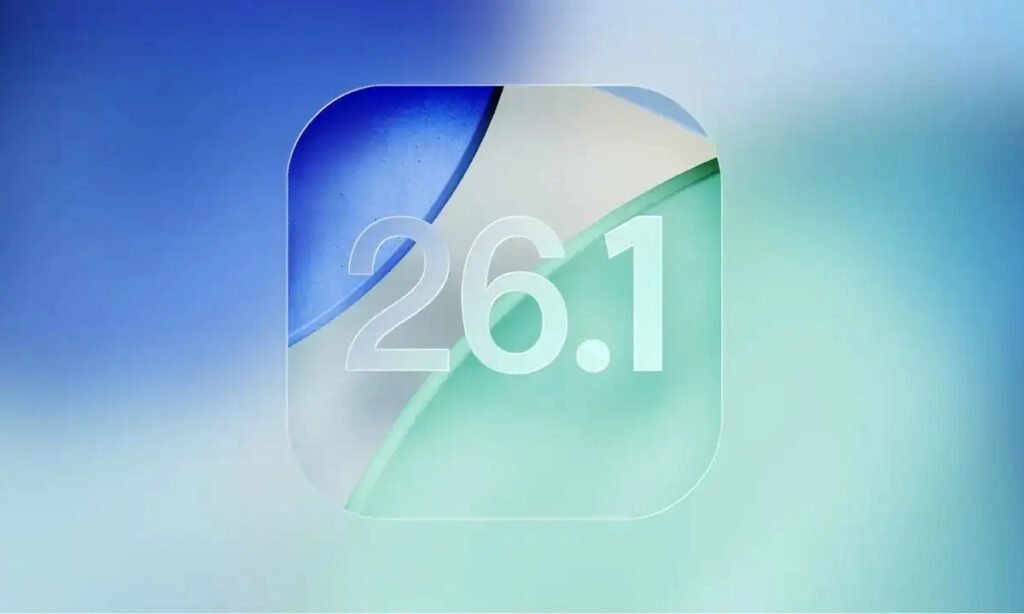Apple has officially released the iOS 26.1 Release Candidate (RC) for developers and beta testers, hinting that the public version is just around the corner. This update packs a mix of fresh design tweaks, smarter AI features, and long-awaited control options, all set to enhance how iPhone users interact with their devices.
From the new Liquid Glass UI toggle to expanded Apple Intelligence language support, iOS 26.1 promises both style and substance. Let’s take a closer look at everything coming with the latest update.
Liquid Glass Interface: Control the Look You Want
The standout visual feature of iOS 26.1 is the Liquid Glass toggle, introduced in beta 4. Found under Settings > Display & Brightness, this setting lets users adjust the transparency of the iPhone interface with Clear or Tinted modes, giving your iPhone a subtle, futuristic makeover.
Lock Screen Swipe Control: No More Accidental Camera Launches
Apple has finally addressed one of users’ biggest complaints. With iOS 26.1, you can now disable the swipe-to-open camera gesture directly from Settings > Camera > Lock Screen Swipe to Open Camera. Perfect for those tired of launching the camera by mistake while unlocking their phones.
Local Capture: Smarter Audio Recording on iPhone
The new Local Capture section in Settings introduces detailed control over microphone gain levels and lets users select where recordings are saved. This is a welcome feature for creators, journalists, and podcasters who rely on external microphones for professional-quality sound.
Apple Intelligence Expands to More Languages
Apple continues its push to make Apple Intelligence accessible globally. iOS 26.1 brings Live Translation for AirPods in more languages, including Mandarin (Simplified and Traditional), Japanese, Korean, and Italian.
Additionally, AI-powered features like Smart Replies and Context Awareness are now expanding to eight new regions, covering languages such as Danish, Dutch, Portuguese, Turkish, and Vietnamese.
New Gestures and UI Tweaks
Apple is refining how users interact with media and alarms.
Apple Music MiniPlayer: Swipe left or right to switch tracks.
Alarms & Timers: Slide to stop instead of tapping.
Call Feedback: Users can now disable haptic vibrations when calls connect or disconnect.
Apple TV App: Redesigned app icon brings a modern refresh to your home screen.
Apple Opens Its Ecosystem: Developer Frameworks in iOS 26.1
Beyond the visual and usability upgrades, Apple is also taking a big step toward cross-platform openness. iOS 26.1 introduces new developer frameworks that make switching between platforms smoother and empower third-party apps.
AppMigrationKit: Enables app data transfer when switching from iPhone to Android, simplifying cross-device migration.
PhotoKit: Allows third-party photo apps to back up images in the background, eliminating the need to keep apps open during uploads.
These frameworks may roll out publicly alongside the final release.
Also Read: Instagram Brings YouTube-Like Watch History to Reels
Eligible iPhones for iOS 26.1 Update
If you’re wondering whether your iPhone will support iOS 26.1, here’s the full list of compatible models.
iPhone 17 Series: iPhone 17, 17 Pro, 17 Pro Max, 17 Air
iPhone 16 Series: iPhone 16, 16 Plus, 16 Pro, 16 Pro Max, 16e
iPhone 15 Series: iPhone 15, 15 Plus, 15 Pro, 15 Pro Max
iPhone 14 Series: iPhone 14, 14 Plus, 14 Pro, 14 Pro Max
iPhone 13 Series: iPhone 13, 13 mini, 13 Pro, 13 Pro Max
iPhone 12 Series: iPhone 12, 12 mini, 12 Pro, 12 Pro Max
iPhone 11 Series: iPhone 11, 11 Pro, 11 Pro Max
iPhone SE (2nd generation and later)
When Is iOS 26.1 Releasing Publicly
While Apple hasn’t confirmed an exact release date, the rollout of the Release Candidate means the official public update is imminent, likely within a week. Users can expect smoother performance, enhanced privacy, and Apple’s most refined iPhone experience yet.
Final Thoughts
The iOS 26.1 update is more than a routine patch. It’s a strategic step towards a smarter, more open Apple ecosystem. With expanded AI integration, visual customisation, and developer-friendly frameworks, it shows how Apple is evolving beyond hardware to redefine user experience.


